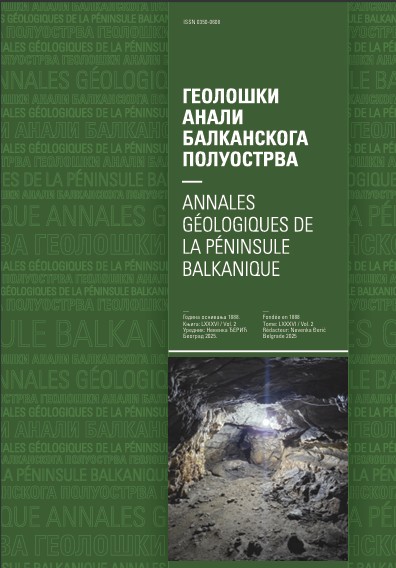Reshaping the Understanding of the Paratethys using Paleogeographic Reconstructions and Geochronology Studies
Abstract
Reshaping the Understanding of the Paratethys using Paleogeographic Reconstructions and Geochronology Studies Abstract. The history of the Paratethys and its inhabiting organisms was profoundly influenced by its connections with the Global Ocean. As the sea-straits linking Paratethys with the ocean expanded, they integrated the Paratethys with the global ocean, causing its water level to mirror the global eustatic fluctuations. These intervals of increased ocean connectivity existed during most part of the Oligocene-Early Miocene, in the Early Badenian -Tarkhanian, and in the Late Badenian –Konkian, when also fostered favourable environments for marine life to flourish in the Paratethys. When the marine connections became unstable and the sea-straits closed (e.g., in the second half of Ruppelian - Solenovian time, late Ottnangian - Kotzakhurian, middle Badenian– Karaganian and from the onset of the Sarmatian up to the Pliocene), ransformed into vast lacustrine waterbodies where water levels and salinities were controlled by the balance between river runoff and precipitation versus evaporation. Excess of water led to the basin expansion and brackish conditions, while deficits caused contraction and fragmentation. This resulted in hypersaline basins and lagoons co-existing with freshwater lakes, creating diverse environments and faunas that hindered effective biostratigraphic correlations. These fluctuations caused the decline of the marine biota, leaving behind only euribiontic organisms capable of enduring drastic shifts in salinity, ion composition, and oxygen levels. Over time, these survivors diversified and gave rise to endemic faunal communities adapted to the brackish environments. The history of the faunistic and phytoplankton composition of the Carpathian part of the basin (Central Paratethys) became noticeably different from the Euxine-Caspian ones from the beginning of the Neogene, which led to different stratigraphic schemes of these parts of the Paratethys. In recent decades, our focus has centred on refining our understanding of the Eastern Paratethys paleogeography. While the periods of high base levels in the Eastern Paratethys are well-documented, the significant base-level drops during isolation phases have often been overlooked. This was primarily because, until recently, there were no effective methods for reconstructing the paleogeography and geochronology of Paratethys during these episodes of base-level drops. However, with the advancements in seismic stratigraphy and the utilization of integrated magneto-bio-stratigraphy, we now possess the means to explore the scale and spatial distribution of paleogeographic changes, particularly during the substantial basin reductions in partial desiccation periods. Large regressions (during second part of the Ruppelian, terminal Tarkhanian and Sarmatian in the Eastern Paratethys and during early Pliocene in the Caspian basin) erode parts of sedimentary layers, forming surfaces of inconsistency between geological bodies accumulated before and after the sea-level drop, which can be traced on seismic profiles as erosion boundaries. By deciphering such surfaces and the depth of river incisions flowing into the basin, it is now possible to reconstruct the relief picture resulting from these erosions and quantify the depth of base-level drops in the Paratethys during the largest regressions.
Copyright (c) 2024 Geološki anali Balkanskoga poluostrva

This work is licensed under a Creative Commons Attribution 4.0 International License.










